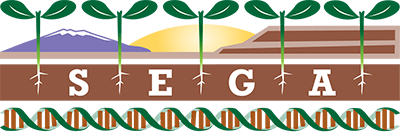You are here
Local biotic adaptation of trees and shrubs to plant neighbors.
Publication Type:
Journal ArticleSource:
Okios, Volume 126, Issue 4 (2017)URL:
https://onlinelibrary.wiley.com/doi/full/10.1111/oik.03240Abstract:
<p>Natural selection as a result of plant–plant interactions can lead to local biotic adaptation. This may occur where species frequently interact and compete intensely for resources limiting growth, survival, and reproduction. Selection is demonstrated by comparing a genotype interacting with con‐ or hetero‐specific sympatric neighbor genotypes with a shared site‐level history (derived from the same source location), to the same genotype interacting with foreign neighbor genotypes (from different sources). Better genotype performance in sympatric than allopatric neighborhoods provides evidence of local biotic adaptation. This pattern might be explained by selection to avoid competition by shifting resource niches (differentiation) or by interactions benefitting one or more members (facilitation). We tested for local biotic adaptation among two riparian trees, <em>Populus fremontii</em> and <em>Salix gooddingii</em>, and the shrub <em>Salix exigua</em> by transplanting replicated genotypes from multiple source locations to a 17 000 tree common garden with sympatric and allopatric treatments along the Colorado River in California. Three major patterns were observed: 1) across species, 62 of 88 genotypes grew faster with sympatric neighbors than allopatric neighbors; 2) these growth rates, on an individual tree basis, were 44, 15 and 33% higher in sympatric than allopatric treatments for <em>P. fremontii, S. exigua</em> and <em>S. gooddingii</em>, respectively, and; 3) survivorship was higher in sympatric treatments for <em>P. fremontii</em> and <em>S. exigua</em>. These results support the view that fitness of foundation species supporting diverse communities and dominating ecosystem processes is determined by adaptive interactions among multiple plant species with the outcome that performance depends on the genetic identity of plant neighbors. The occurrence of evolution in a plant‐community context for trees and shrubs builds on ecological evolutionary research that has demonstrated co‐evolution among herbaceous taxa, and evolution of native species during exotic plants invasion, and taken together, refutes the concept that plant communities are always random associations.</p>
- Log in to post comments
- Google Scholar
- DOI
- RTF
- EndNote XML
- RIS
Theme by Danetsoft and Danang Probo Sayekti inspired by Maksimer
